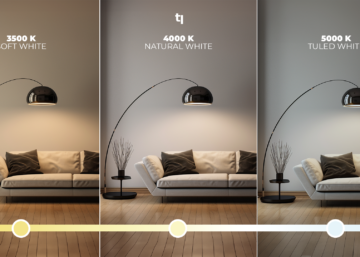Watts vs. Lumens: Illuminating the Difference for Perfect Home Lighting
Choosing the right light bulb can be a confusing task, especially with terms like “watts” and “lumens” thrown around. If you’ve ever found yourself squinting at light bulb packaging, wondering what these numbers mean, you’re not alone. Understanding the difference between watts and lumens is key to creating the perfect lighting ambiance in your home while saving energy and money.
The Watts and Lumens Story: A Shift in Lighting Technology
For years, we relied on wattage to determine a light bulb’s brightness. A higher wattage meant a brighter light. This was true for traditional incandescent bulbs, where wattage directly correlated with light output. However, the advent of energy-efficient lighting technologies, such as LEDs (Light Emitting Diodes), changed the game.
Watts vs. Lumens: Understanding the Key Difference
- Watts: Watts measure the amount of electricity a light bulb consumes. Lower wattage bulbs use less energy, leading to reduced electricity bills.
- Lumens: Lumens measure the actual brightness or light output of a bulb. Higher lumens mean a brighter light.
With the rise of LEDs, focusing on lumens has become crucial. While watts still matter for energy consumption, lumens are the true indicator of how bright a bulb will be.
Choosing the Right Bulb: Lumens as Your Guide
To choose the perfect light bulb, consider the following factors:
- Room Size and Purpose: Larger rooms or task-oriented areas like kitchens and offices require more lumens than smaller rooms or cozy spaces like bedrooms.
- Desired Brightness: Determine the desired level of brightness for each room. Look for bulbs with lumen outputs that match your needs.
- Lumens per Watt (lm/W): This ratio measures energy efficiency. A higher lm/W means the bulb produces more light while using less energy. Opt for bulbs with a high lm/W ratio to save on energy costs.
- Color Temperature: Choose between warm white (yellowish, cozy) and cool white (bluish, bright) light depending on the mood you want to create in each room.
Making Informed Choices for Your Home
- Task Lighting: For areas where you need bright, focused light, such as kitchens or workspaces, choose bulbs with high lumen output and cool white light.
- Ambient Lighting: In living rooms or bedrooms, where you want a more relaxed atmosphere, opt for warm white light with a lower lumen output.
- General Lighting: For hallways or bathrooms, choose bulbs with moderate lumen output and a neutral white light.
By understanding the difference between watts and lumens, you can confidently select the right light bulbs for your home. Prioritize lumens to achieve the desired brightness levels, while considering watts for energy efficiency. With the right bulbs, you can create a well-lit, inviting, and energy-efficient home.








